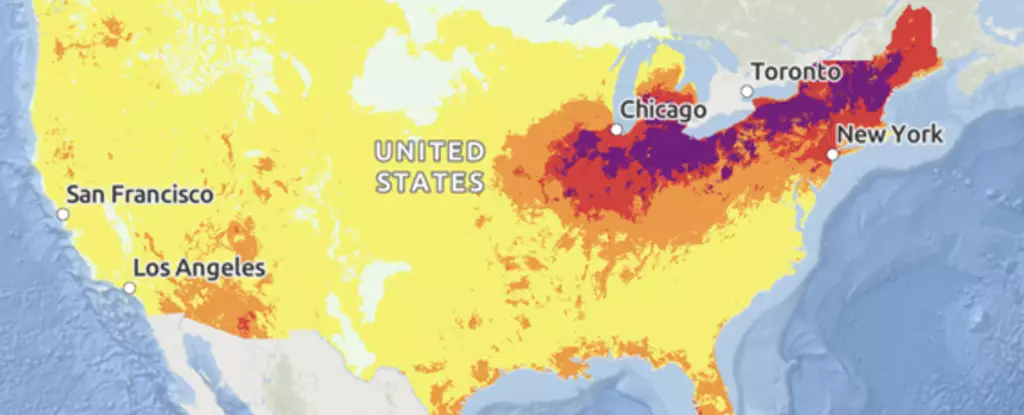As more than 260 million individuals brace themselves for extreme temperatures in the upcoming week, the National Weather Service (NWS) warns that the first significant heatwave of the summer is set to shatter records across the northeastern US. The duration of this heatwave is expected to be noteworthy, with potential to be the longest experienced in decades for certain regions. A heat dome is projected to shift eastward from the Great Lakes towards New England, bringing scorching temperatures of up to 41 °C (105 °F). Even overnight, temperatures are forecasted to provide little relief, remaining in the mid 20s °C (70s °F). Heat domes form when high pressure atmospheric systems linger over a specific area for extended periods, trapping warm air beneath them. This heat trap, as forecasted by the NWS, is exceptionally early and may persist long enough to induce droughts in various regions. The combination of early heat arrival, extended duration, abundant sunshine, and lack of overnight relief heightens the danger of this impending heatwave beyond mere temperature values.
Implications for Health and Safety
Cities in New York, Massachusetts, Pennsylvania, Ohio, Illinois, Indiana, Missouri, and Michigan face an extreme risk scenario, where individuals lacking access to cooling or hydration may encounter severe health challenges. Urban areas, in particular, are susceptible to extreme heat due to the heat island effect caused by heat-retaining materials in infrastructure and a deficit of cooling vegetation. Experts recommend staying indoors whenever feasible. For those compelled to venture outside, and for vulnerable populations like children, the elderly, and pregnant individuals, consuming ample water and taking frequent breaks are highly advised. Observing symptoms of heat stress, such as lethargy in oneself or others, and checking on at-risk loved ones are crucial. Additionally, never leave vulnerable individuals or pets in a parked vehicle as temperatures inside can soar dangerously high.
Climate Change Amplifies Heat-Related Dangers
Regrettably, heat remains the primary cause of weather-related deaths in the United States, with fatalities on the rise as heatwaves become more frequent owing to exacerbated human-induced climate change. Extreme heat events are intensifying in both their severity and duration, exacerbating fire risks in affected regions.
The looming threat of extreme heatwaves necessitates proactive measures to safeguard public health and well-being. It is imperative to prioritize heat safety guidelines, from staying hydrated and cool indoors to looking out for vulnerable individuals in our communities. As temperatures surge next week, vigilance and preparedness are paramount in mitigating the risks posed by these unprecedented heatwaves. The time to act is now.


Leave a Reply